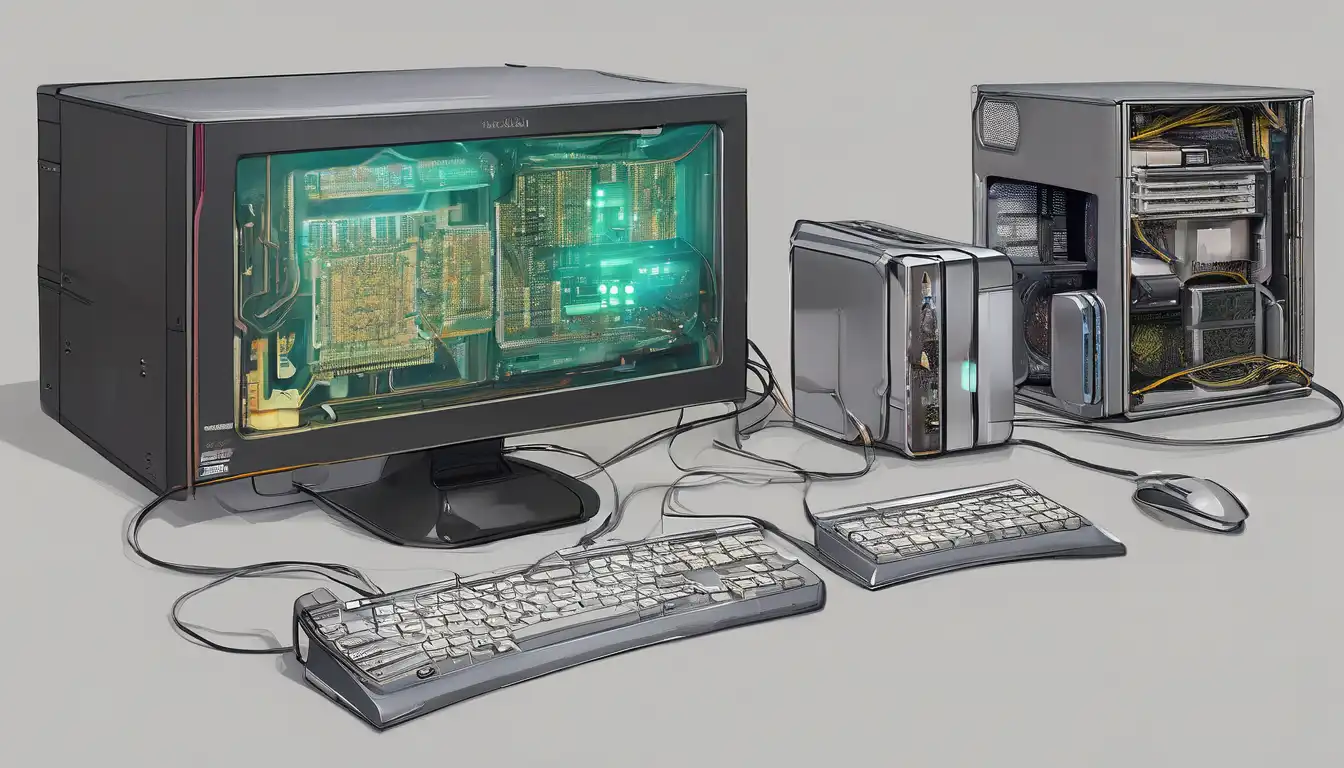Revolutionary Advances in Computer Hardware Technology
The landscape of computer hardware is undergoing unprecedented transformation, with innovations emerging at an accelerated pace. From quantum computing breakthroughs to AI-optimized processors, the latest developments are reshaping how we interact with technology. These advancements promise to deliver unprecedented performance, efficiency, and capabilities that were once confined to science fiction.
Next-Generation Processor Technologies
Processor manufacturers are pushing the boundaries of computational power with revolutionary architectures. AMD's Zen 4 and Intel's Raptor Lake processors demonstrate significant improvements in multi-core performance and energy efficiency. The integration of AI acceleration directly into CPUs marks a pivotal shift, enabling real-time machine learning applications without dedicated hardware. These processors feature advanced manufacturing processes down to 3nm technology, delivering higher transistor density and reduced power consumption.
Quantum computing represents the most radical departure from traditional processing methods. Companies like IBM and Google are making substantial progress in developing stable quantum bits (qubits) that can maintain coherence for longer periods. While still in experimental stages, quantum processors show promise for solving complex problems in cryptography, drug discovery, and climate modeling that would take classical computers centuries to compute.
Memory and Storage Innovations
The memory hierarchy is experiencing transformative changes with DDR5 RAM becoming mainstream, offering speeds up to 8400 MT/s and improved power efficiency. Non-volatile memory technologies like 3D XPoint and MRAM are bridging the gap between traditional RAM and storage, providing persistent memory solutions that retain data without power while maintaining near-RAM speeds.
Storage technology continues to evolve with PCIe 5.0 SSDs delivering read/write speeds exceeding 14,000 MB/s. The adoption of QLC (Quad-Level Cell) NAND flash has increased storage densities while reducing costs, making terabyte-scale SSDs more accessible. Emerging technologies like computational storage integrate processing capabilities directly into storage devices, offloading tasks from main processors and improving overall system efficiency.
Graphics and Display Technologies
Graphics processing units (GPUs) have evolved beyond gaming and professional visualization to become essential components for AI training and scientific computing. NVIDIA's Ada Lovelace architecture and AMD's RDNA 3 introduce real-time ray tracing capabilities and AI-powered upscaling technologies that dramatically improve visual fidelity while maintaining performance. The integration of tensor cores and AI accelerators in modern GPUs enables sophisticated machine learning applications at unprecedented scales.
Display technology advancements include microLED panels offering superior brightness, contrast ratios, and energy efficiency compared to traditional OLED displays. High refresh rate monitors reaching 500Hz provide smoother motion rendering for competitive gaming and professional applications. The emergence of glasses-free 3D displays and holographic projection systems points toward future interfaces that could revolutionize how we interact with digital content.
Cooling and Power Management Solutions
As component densities increase, thermal management becomes increasingly critical. Advanced cooling solutions include phase-change cooling systems that can handle thermal loads exceeding 1000 watts, enabling sustained high-performance computing. Liquid cooling has moved beyond enthusiast systems to enterprise-level implementations, with direct-die cooling solutions providing more efficient heat transfer.
Power delivery systems have seen significant innovation with digital voltage regulation modules (VRMs) offering precise power control and improved efficiency. The adoption of gallium nitride (GaN) and silicon carbide (SiC) semiconductors in power supplies reduces energy losses and enables more compact form factors. These advancements contribute to overall system efficiency and sustainability, reducing the environmental impact of computing infrastructure.
Connectivity and Peripheral Innovations
The latest connectivity standards are transforming data transfer capabilities. USB4 Version 2.0 doubles transfer speeds to 80 Gbps, while Thunderbolt 5 promises up to 120 Gbps bandwidth. Wi-Fi 7 technology introduces multi-link operation, allowing simultaneous connections across multiple frequency bands for improved reliability and reduced latency. These advancements enable new applications in high-resolution video streaming, virtual reality, and real-time collaboration.
Peripheral technology has evolved with the integration of AI capabilities directly into input devices. Smart keyboards with built-in language models can predict text and correct errors in real-time, while mice with precision sensors offer sub-micron accuracy for professional design work. Haptic feedback technology has advanced to provide more realistic tactile experiences in gaming controllers and VR interfaces.
Emerging Hardware Paradigms
Neuromorphic computing represents a fundamental shift in hardware architecture, mimicking the structure and function of the human brain. Intel's Loihi and IBM's TrueNorth processors demonstrate energy-efficient pattern recognition capabilities that could revolutionize edge computing and IoT applications. These systems excel at tasks like sensory processing and anomaly detection while consuming minimal power.
Photonic computing utilizes light instead of electricity for data transmission and processing, offering potential speeds thousands of times faster than conventional electronic systems. While still in research phases, photonic chips show promise for overcoming the limitations of Moore's Law and enabling new computational paradigms. The integration of optical interconnects within traditional silicon chips could dramatically reduce latency and power consumption in data centers.
Future Outlook and Industry Impact
The convergence of these hardware innovations is driving unprecedented computational capabilities across industries. Healthcare benefits from accelerated medical imaging and drug discovery, while manufacturing sees improvements in automation and quality control through advanced sensor processing. The financial sector leverages high-frequency trading systems powered by ultra-low-latency hardware, and scientific research accelerates through distributed computing networks.
As hardware technology continues to advance, we can expect further integration of AI capabilities directly into silicon, the maturation of quantum computing for practical applications, and the development of more sustainable computing solutions. The ongoing miniaturization of components while increasing performance demonstrates that innovation in computer hardware remains a driving force in technological progress, with implications reaching every aspect of modern life.
These developments underscore the importance of staying current with hardware trends, whether for personal computing needs or enterprise infrastructure planning. The rapid pace of innovation ensures that tomorrow's computing landscape will look fundamentally different from today's, offering exciting possibilities for developers, businesses, and consumers alike.
